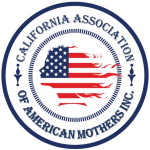
A lot has changed with written communication since I was in college. Well, I’m a little embarrassed to say that not only did we not have computers back then, I had an old electric typewriter – without the correction tape! All correspondence was handwritten because using the typewriter was saved for formal research papers. When we made a typo, we’d have to retype the entire paper or use a lot of Wite-Out. There was no “Hey Susan…” We addressed everyone formally using their titles (Dr, Mrs, Mr) and always used our best grammar.
Fast forward to today when emails are considered the formal protocol and texts are used for friendly communication. Not only are messages truncated with abbreviations (BRB=be right back; FOMO=fear of missing out) I don’t usually understand, but I often search for clues in the few words I receive to help me decipher whether the message is positive or negative. Without the use of emojis (faces with emotions), I’d be clueless in creating any kind of meaningful conversation.
As a college advisor, it shocks me to see how students communicate with their high school teachers and college professors. Most students don’t know how to write a business-style letter or even a professional letter. Their requests for more information or even letters of recommendation are written like demands from entitled children. Looking at the world from their self-centered universe, their letters lack pleasantries that might entice the receiver to respond, and most don’t offer any kind of thanks or appreciation. They lack important details like background information we need to answer their questions or format and deadlines for letters of recommendation. That’s why all students should observe “netiquette” when communicating with teachers and professors.
So what is netiquette? It’s etiquette on the internet. For instance, it would be nice to hear how they like our classes or style of teaching. Even a “How did you like that comment that Jason made in our last class?” to show their engagement or understanding of the world from our perspective. When the information they request is something they could have found on their own, these students don’t realize that they’re giving us a bad first impression. And ultimately, when we are asked to write letters of recommendation or need to determine final grades, we hold the cards and make decisions based on all of our interactions with them.
I’m not advocating students to brown nose their teachers or professors. Actually, it’s quite the opposite. When students reach out and make connections in person or through emails or texts, it behooves them to greet teachers with proper salutations (Dr, Mrs, Mr, Ms) and share their thoughts before requesting favors. They should make sure they’ve done all of the work on their end before asking them for assistance. They should always offer to meet or gather more information or documents to save our precious time.
When students are polite, respectful, and helpful, they’ll establish a positive relationship with their teachers and professors, which will ultimately put them in a good position to request those all-important letters of recommendation or grade bumps when they’re on the fence. So netiquette is real and should be implemented in correspondence with teachers and professors.
[Source]
